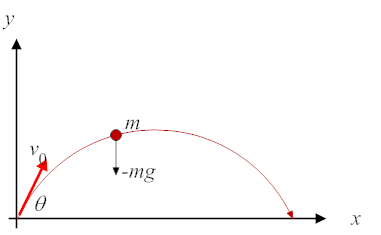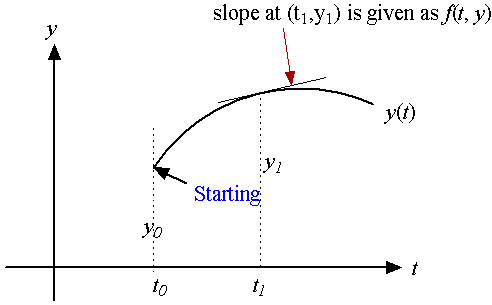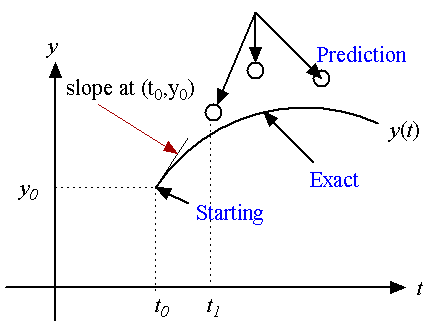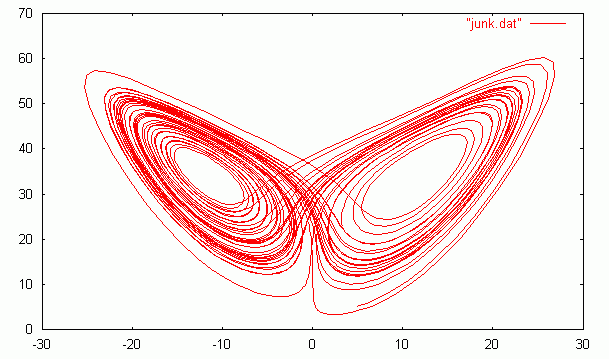
| (3) |
| (4) |
| (5) |
| (6) |
| (7) |
| (8) |
| (9) |
| (10) |
| (11) |
| (12) |
| (13) |
| (14) |
| (15) |
| (16) |
| (17) |
| (18) |
| (19) |
| (20) |
 Correction to the above equation can be made as
Correction to the above equation can be made as
| (21) |



x = [0 : 10]; % Generates an interval between 0 and 10 with an increment of 1. x = 0 : 10; % works too. x = [0 : 0.01 : 1]; %Generates an interval between 0 and 10 with an increment of 0.01. x = 0 : 0.01 : 1; % works too. plot(x, sin(x), x, cos(x)); %Plots the graphs of sin(x) and cos(x).
x = linspace(0, 10, 6) % Generates 6 points from 0 to 10. plot(x, sin(x), x, cos(x)); %Plots the graphs of sin(x) and cos(x).
f1=@(x) x^2-x +1 ; f2=@(x,y) x^2-3*y + x*y; f1(5) f2(4,5) |

| (1) |
| (2) |

| (3) |
| (4) |
| (5) |
| (6) |
| (7) |
| (8) |
| (9) |
| (10) |
| (11) |
| (12) |
| (13) |
| (14) |
| (15) |
| (16) |
| (17) |
| (18) |
| (19) |
| (20) |
 Correction to the above equation can be made as
Correction to the above equation can be made as
| (21) |
|
|
|
|
|

| (22) |
| (23) |
| (24) |
 Equation (24) can be written as
Equation (24) can be written as
| (25) |
| (26) |
| (27) |
#include <stdio.h>
#include <math.h>
double f(double t, double y)
{
return y;
}
int main()
{
double h = 0.1, y, t;
int i;
t = 0.0; y = 1.0;
for (i = 0; i<= 10; i++)
{
printf("t=%f %f %f\n", t, y, exp(t));
y = y + h * f(t,y);
t = t + h;
}
return 0;
}
|

|
| (28) |
#include <stdio.h>
#include <math.h>
double f(double t, double y)
{return y;}
main()
{
double h=0.1, t, y, k1,k2,k3,k4;
int i;
/* initial value */
t=0.0; y=1.0;
for (i=0; i<=10; i++)
{
printf("t= %lf rk= %lf exact=%lf\n", t, y, exp(t));
k1=h*f(t,y);
k2=h*f(t+h/2, y+k1/2.0);
k3=h*f(t+h/2, y+k2/2.0);
k4=h*f(t+h, y+k3);
y= y+(k1+2.0*k2+2.0*k3+k4)/6.0;
t=t+h;
}
return 0;
}
|
| (29) |
|
|
|
#include <stdio.h>
#include <math.h>
double f1(double t, double y1, double y2)
{return y2;}
double f2(double t, double y1, double y2)
{return -y1;}
int main()
{
double h=0.02, y1, y2, t;
int i;
y1=0.0; y2=1.0;
t=0.0;
for (i=0; i<=100; i++)
{
/*printf("t= %lf %lf %lf\n", t, y1, sin(t));*/
printf("%lf %lf %lf\n", t, y1, sin(t));
y1=y1+h*f1(t,y1,y2);
y2=y2+h*f2(t,y1,y2);
t=t+h;
}
return 0;
}
|
|
#include <stdio.h>
#include <math.h>
#define P 16.0
#define b 4.0
#define R 35.0
double f1(double u, double v, double w)
{return P*(v-u);}
double f2(double u, double v, double w)
{return -u*w+R*u-v;}
double f3(double u, double v, double w)
{return u*v-b*w;}
int main()
{
double h, t, u, v, w;
int i;
/* initial value */
t=0.0; h=0.01;
u=5.0; v=5.0; w=5.0;
for (i=0; i< 3000; i++)
{
u=u+h*f1(u,v,w);
v=v+h*f2(u,v,w);
w=w+h*f3(u,v,w);
printf("%lf %lf\n", u, w);
t=t+h;
}
return 0;
}
|
c:\tmp\gcc -o lorenz.exe lorenz.c c:\tmp\lorenz.exe > lorenz.dat (Launch gnuplot) Change directory to c:\tmp plot "lorenz.dat" with line |
 Here is a code in Matlab/Octave.
Here is a code in Matlab/Octave.
P=16;b=4;R=35; f1=@(u,v,w) P*(v-u); f2=@(u,v,w) -u*w+R*u-v; f3=@(u,v,w) u*v-b*w; t=0;h=0.01; u=5;v=5;w=5; for i=1:1:3000 u=u+h*f1(u,v,w); v=v+h*f2(u,v,w); w=w+h*f3(u,v,w); uu(i)=u;vv(i)=v; t=t+h; end; plot(uu',vv'); |
|
f=@(t,y) -t*t*y; tspan=linspace(0,5,100); y0=1; [t,y]=ode45(f, tspan, y0); plot(t,y); |
|
f=@(y,t) -t*t*y; tspan=linspace(0, 3, 100); y0=1; sol=lsode(f, y0, tspan); plot(tspan, sol); |


